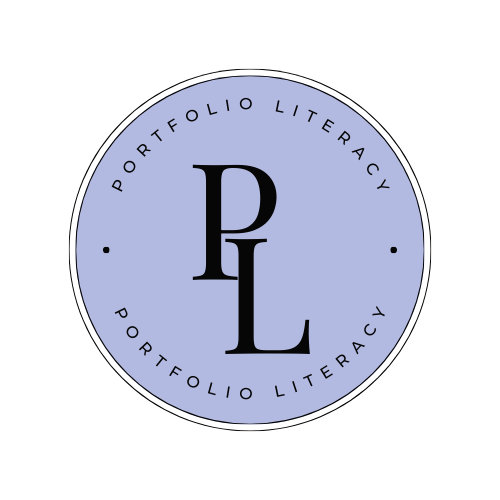Adding real estate to your portfolio can be a strategic move to enhance financial stability. It gives you the chance to branch out from traditional investments like stocks and bonds, helping reduce the impacts of market fluctuations.
As you explore this sector, consider how such assets can align with your financial goals and risk tolerance. Investing in real estate can be a rewarding way to build wealth over time.
1) Direct Ownership in Where You Live

Owning where you live in can be a great starting point for real estate investment. It allows you to understand the dynamics of property ownership while building equity. As you pay down your mortgage, your home can increase in value, giving you a vital asset in your investment portfolio.
One way to maximize the benefits of homeownership is through house hacking. This strategy involves renting out a portion of your primary residence to offset costs. For example, you might rent a room or a basement apartment. This approach not only helps with mortgage payments but also introduces you to the basics of being a landlord.
House hacking can be an effective way to dip your toes into real estate investing without taking on a full investment property. As you gain experience, you might explore further real estate opportunities. Strategies like this are often discussed among real estate communities for their potential to build wealth.
If you’re interested in expanding your knowledge on methods like house hacking, consider exploring resources that offer detailed insights. Forums and tools from online platforms dedicated to real estate can be valuable. Engaging with experienced investors on BiggerPockets can provide you with tips and strategies to grow your real estate investments efficiently.
Owning your home provides a practical approach to real estate investment. It lays a solid foundation for financial growth and offers potential tax benefits. By exploring strategies like house hacking, you can begin to grow your portfolio with other options on this list.
2) Real Estate Investment Trusts (REITs)
Real Estate Investment Trusts, or REITs, are a way to invest in real estate without owning physical properties. By buying shares in REITs, you can own a stake in a collection of properties. This can include office buildings, shopping malls, apartment complexes, and other income-generating real estate.
Publicly traded REITs are listed on major stock exchanges, making it easy to buy and sell them. These REITs offer liquidity similar to stocks. You can add REITs to your investment portfolio with the click of a button in your brokerage or IRA account. This accessibility makes them a convenient choice for investors looking to diversify their dividend portfolio.
REITs often pay dividends to shareholders. These dividends come from the rental income collected from properties owned by the REIT. Many investors appreciate this regular income as it can provide a steady cash flow. It’s important to check the dividend yield of a REIT to understand the potential income you might receive.
Besides dividends, REITs can also offer capital appreciation. As the value of properties within the REIT rises, the value of the REIT shares can also increase. This means you might benefit from both income and growth over time.
3) Real Estate Crowdfunding Platforms

Investing in real estate through crowdfunding platforms allows you to diversify real estate investments with ease. These platforms enable you to participate in real estate deals without the need to buy properties directly. This way, even if you’re not an experienced investor, you can still access the real estate market conveniently.
Platforms like Fundrise offer possibilities for both accredited and non-accredited investors. You can start with a relatively small amount and scale up your investment over time. It’s a practical option if you want to explore real estate investments without committing too much capital upfront or want exposure to different asset subclasses within real estate like being the creditor for a new construction. Check out the invitation link, for up to $50 added to your investment when you make your first investment with Fundrise.
Each platform has its own set of investment offerings, risk profiles, and potential returns. Therefore, it’s important to research and understand the options available. Service features, fees, and ease of use also vary, so consider these factors when choosing a platform to invest with.
4) Diversified ETFs and Mutual Funds

Using diversified ETFs and mutual funds can be an effective way to include real estate in your investment portfolio. These financial products allow you to invest in a wide range of real estate assets without needing to buy actual properties.
ETFs and mutual funds offer a convenient option for investors who want exposure to real estate markets. They pool money from many investors to invest in a diversified collection of real estate investments. This can include residential, commercial, and industrial properties.
By investing in these funds, you spread your investment across many properties. This diversification helps protect your portfolio if one sector or property underperforms. It’s a strategy to manage risk while still benefiting from potential real estate returns.
Make sure to evaluate your risk tolerance and investment goals when choosing a fund. Diversified ETFs and mutual funds simplify the process of investing in real estate. They offer broad exposure, making them a practical option for adding real estate to your portfolio.
5) Rental and Fix & Flip Properties
Adding rental properties to your portfolio can provide a steady income stream. Tenants pay rent, which can cover mortgage and operation costs. Over time, property values may increase, adding to your investment gains. This strategy requires time and management skills to handle tenant issues and property maintenance, it’s not as easy as it may seem on TikTok.
Fix and flip properties involve purchasing homes that need renovations. You improve them to increase their market value before selling. This approach can lead to quicker profits compared to rental properties. To succeed, you need to assess market conditions, renovation costs, and potential sale prices carefully. You do not want to spend too much money fixing it up only to realize you can’t sell it at a profit.
Leverage is a critical tool in real estate investing. It allows you to control larger properties with less capital. Utilizing loans effectively can help expand your portfolio without overextending finances. Be aware of the risks involved and ensure that you can manage loan repayments comfortably. I recommend having a buffer of cash for after a purchase is completed just to service the debt obligations for a few months (like an emergency fund).
Hard work is essential in both rental and fix and flip strategies. For rental properties, managing tenants and property upkeep requires consistent effort. In fix and flip ventures, you need to coordinate repairs, budgets, and timelines. Staying organized and proactive can make your additional real estate investments successful.
Staying Educated about the Market
To successfully invest in real estate, staying informed about market changes is crucial. Tapping into location-specific podcasts and networking platforms can offer great insights and connections.
Location Specific Podcasts
Podcasts focusing on local real estate markets can be incredibly valuable. They provide updates on average days on market, events impacting your market, and market trends specific to certain areas. By listening to experts and industry veterans, you can get timely information that helps in making informed decisions.
Look for podcasts that feature interviews with local real estate agents, investors, and analysts. These discussions often include forecasts and advice tailored to the unique aspects of the area. Regular listening ensures you stay ahead in your chosen market.
Networking Platforms
Networking platforms like BiggerPockets are essential for building connections and staying informed about the real estate industry. Websites like LinkedIn are good places to join groups and discussions related to real estate. These platforms allow you to connect with industry professionals and learn from their experiences and insights.
Participating in online forums and attending meetups can also offer opportunities to ask questions and gain diverse perspectives. Leveraging these networks may also help you join a deal or get exposure to more deal flow on properties in your area.
Disclaimer:
This post contains links to other sites that compensate Portfolio Literacy for referrals. I invest with Fundrise, I do not receive compensation for the writing of this post. I do however receive compensation from Fundrise when someone creates an account and invests with them after using my invitation link. If you use my link, you will also receive a $50 voucher towards your investment with Fundrise.
